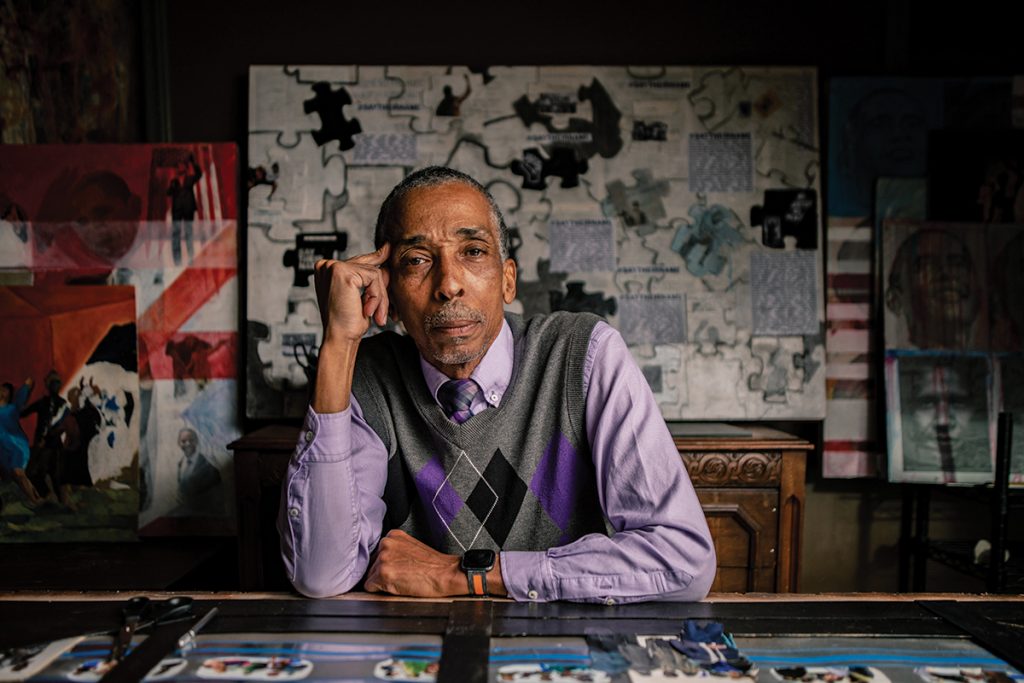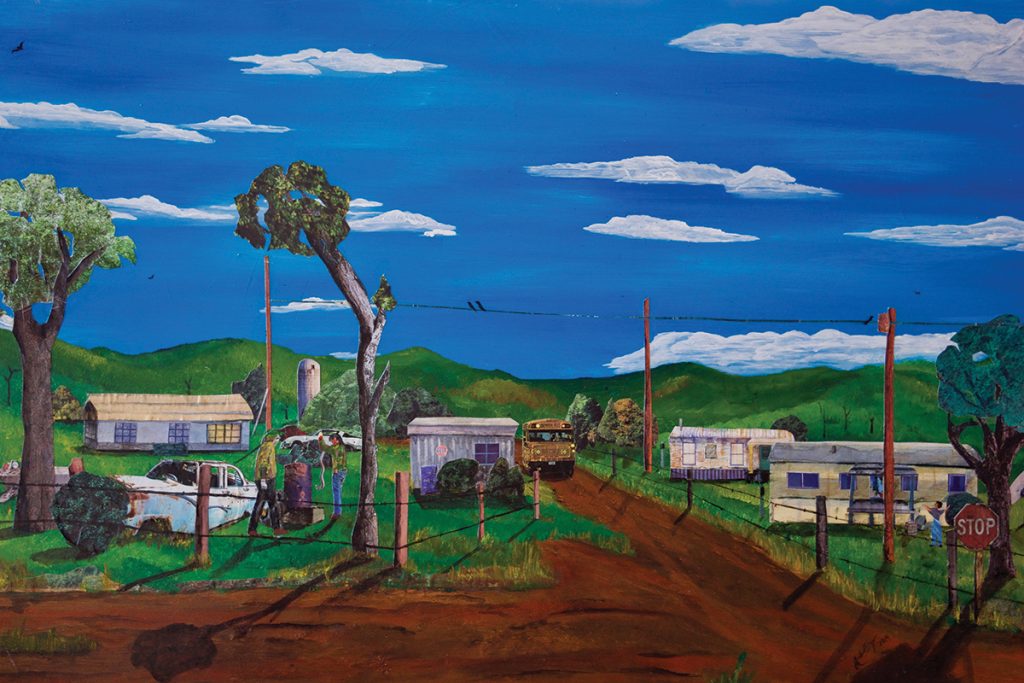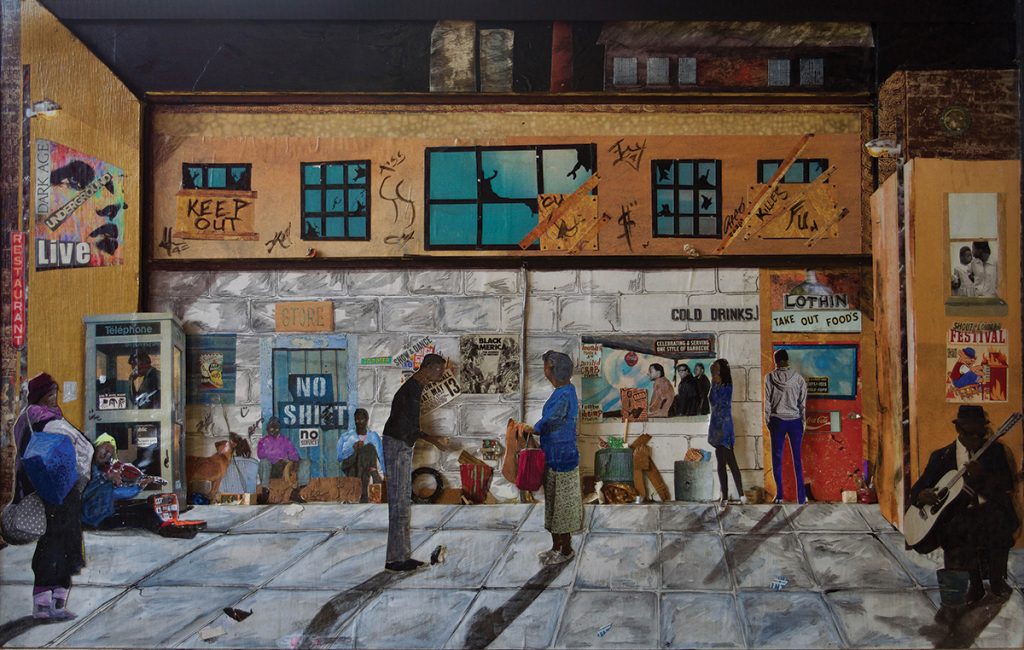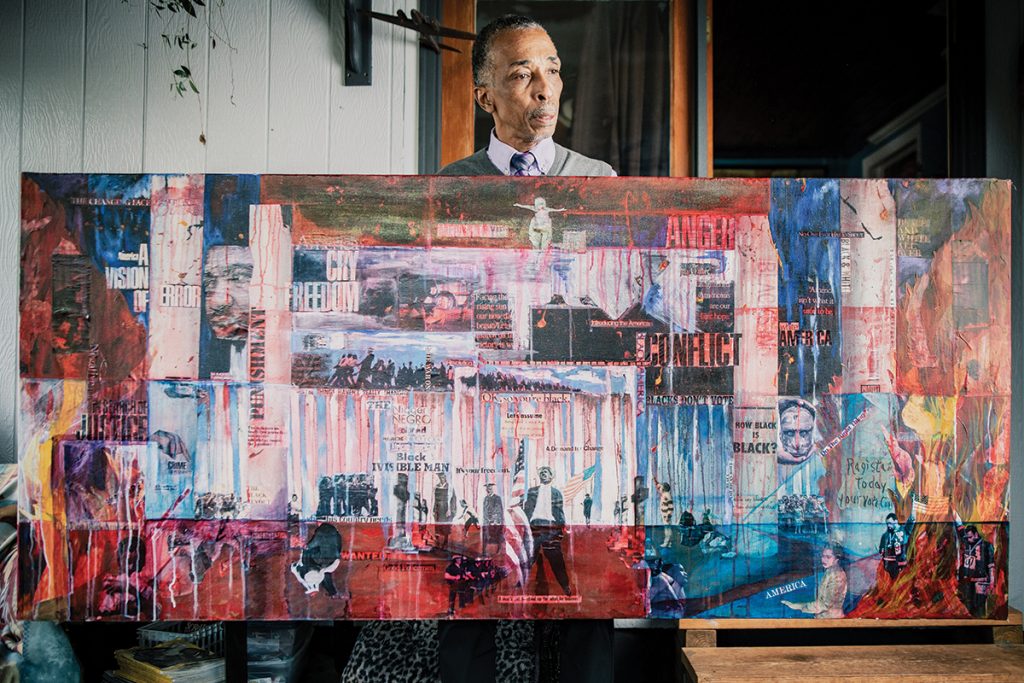
Portrait by Jack Robert
New York born and now WNC-based Roscoe Conn is a painter, collagist, soccer coach, art teacher, and retired Rutherford County public-school educator whose paintings have been shown at Blue Spiral 1, Upstairs Artspace, and are part of a permanent installation at KidSenses Children’s Interactive Museum in Rutherfordton. His artwork focuses in three main areas: landscapes, abstracts, and political pieces.
Explain a bit about your process.
My brain captures images, and I collage them together. It can be like putting pieces together to solve a puzzle. And it’s slow. I might spend 30 minutes just looking for an image I remember seeing in a magazine somewhere.

You must have a good memory.
I pride myself on visualizing my memory. I can’t remember a name, but I can analyze and notice everything and recite the tag number of a car I parked next to. But that’s also because the human mind can more easily remember up to seven digits. My mind is a collage of thoughts, and so are my words.

Speaking of words, you used braille in one abstract. Why did you learn braille?
When I was an assistant teacher, the principal asked would I mind learning it for a [sight-impaired] student who was transferring in. I was also working at Winn Dixie, in frozen food. Trying to learn braille with numb fingers — I couldn’t feel it. My wife said, “Have you ever thought of just looking at it?” I did, and counted the dots and learned that way.

Using your visual memory, what are you working on now?
A subway series, and one about trailer parks. I lived in one once, and living in a rectangle drove me crazy. You learn to walk in a straight line. But when I do a painting of apartments, each window will tell a different story. That’s how David Duke [former KKK leader] ended up in one of the apartments I did, in a neighborhood he’d hate, in a Black man’s painting. I said, “Okay, David, now you’re stuck in my painting.” We are all prejudiced; we prejudge. But racism is acting on that prejudice. We are still trying to figure out where Blacks fit into America. It’s hard for people to deal with, and the only way to educate people is to talk to them, but it might be a painful conversation.

Photo by Jack Robert
Your pieces contain multitudes.
There are a lot of hidden messages in my artwork that you might not see at first. I look at things and think. Some days I wish I didn’t, because my brain hurts. But you produce better art when you analyze your own culture and the environment around you. As an artist, we are dealing with problems, and can portray that on canvas. Incorporating more photography is my next step.
How do you know when a piece is finished?
That’s a really good question, because I used to depend on framing the piece behind glass when I was tired of touching it. But later I’d open them back up to do more, so that wasn’t working. It’s finished when I don’t have anything else to do on it. It may veer off, and four years later, I pick it up again. Some are like therapy pieces, like this one I’m doing of the American flag. I keep embedding things into it and it will never be finished. But that’s therapeutic for me.
Roscoe Conn, Rutherfordton. Look for the artist’s work at KidsSenses Children’s Interactive Museum (172 North Main St., Rutherfordton, kidsenses.org).